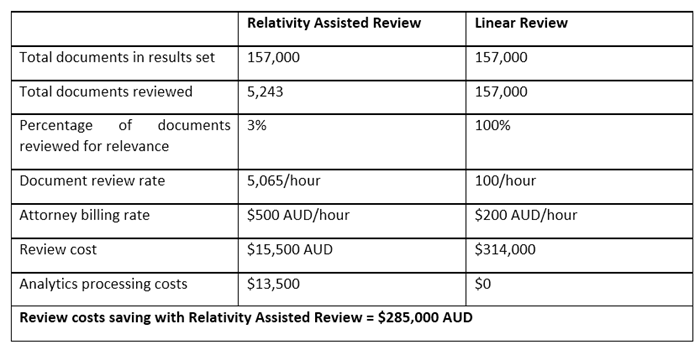Fast forward 15 years and we are seeing an increase in the percentage of law firms investing in new technology to increase efficiency and become more competitive, irrespective of size.
While paper documents are still relevant in the legal industry, firms are now faced with the issue of big data and unstructured databases. The exponential growth of electronically stored information (ESI) such as emails, office documents and social media postings can be both an opportunity and a risk depending on how it’s managed.
Firms who don't take advantage of the right technology will struggle to compete.
Embrace the Cloud to enhance productivity
The Cloud enables lawyers to work from multiple devices and provides secure access to the files that they need, whenever they need them. Lawyers can even share documents and collaborate with their colleagues and clients using the same Cloud-based platform.
Having access to the right technology is synonymous with productivity. Given most traditional legal technologies such as practice management, electronic discovery and transcript management are now available as Software as a Solution (SaaS) – small and large law firms alike can benefit.
Pushing the boundaries of eDiscovery by using technology assisted review
In 2012, we predicted eDiscovery solutions would evolve at such a rapid pace, its functionality and features would surpass adoption rates. This is now true. While most local eDiscovery cases are still relying heavily on keyword searches and linear reviews, technology has evolved beyond that. A good example is the use of predictive coding or Technology Assisted Review (TAR).
TAR is a proven, methodical way of leveraging and extending judgment through technology. At its core, TAR is the process of using intelligent algorithms or analytics to distinguish between relevant and non-relevant documents, allowing the user to save time, reduce costs and gain reliable knowledge.
To illustrate the power of this technology, a Law In Order client from Australia recently used Relativity, our web-based document review platform to review approximately 157,000 documents. The technology returned 5,000 relevant documents, effectively saving our client over 1,500 review hours and $285,000.00 AUD (see graph below).

While the advantage of TAR is clear, lawyers, clients and the judiciary are still cautious. TAR is in its infancy in Singapore, however if we look to the more mature eDiscovery markets such as the US and UK, we can see a dramatic uptake and incredible results.
Law firms of all sizes are expected to provide around the clock, secure access to files for collaboration between lawyers and clients. In this digital age, where most communication and data transfer is online, the ability to automate processes to save time and reduce costs. Lawyers who embrace new technology can instead spend their time focusing on their clients and bottom line.
An edited version of this article appeared in Law Gazette
Singapore, October 2015 issue.
Like what you're reading? Click here to subscribe to our latest news and information.